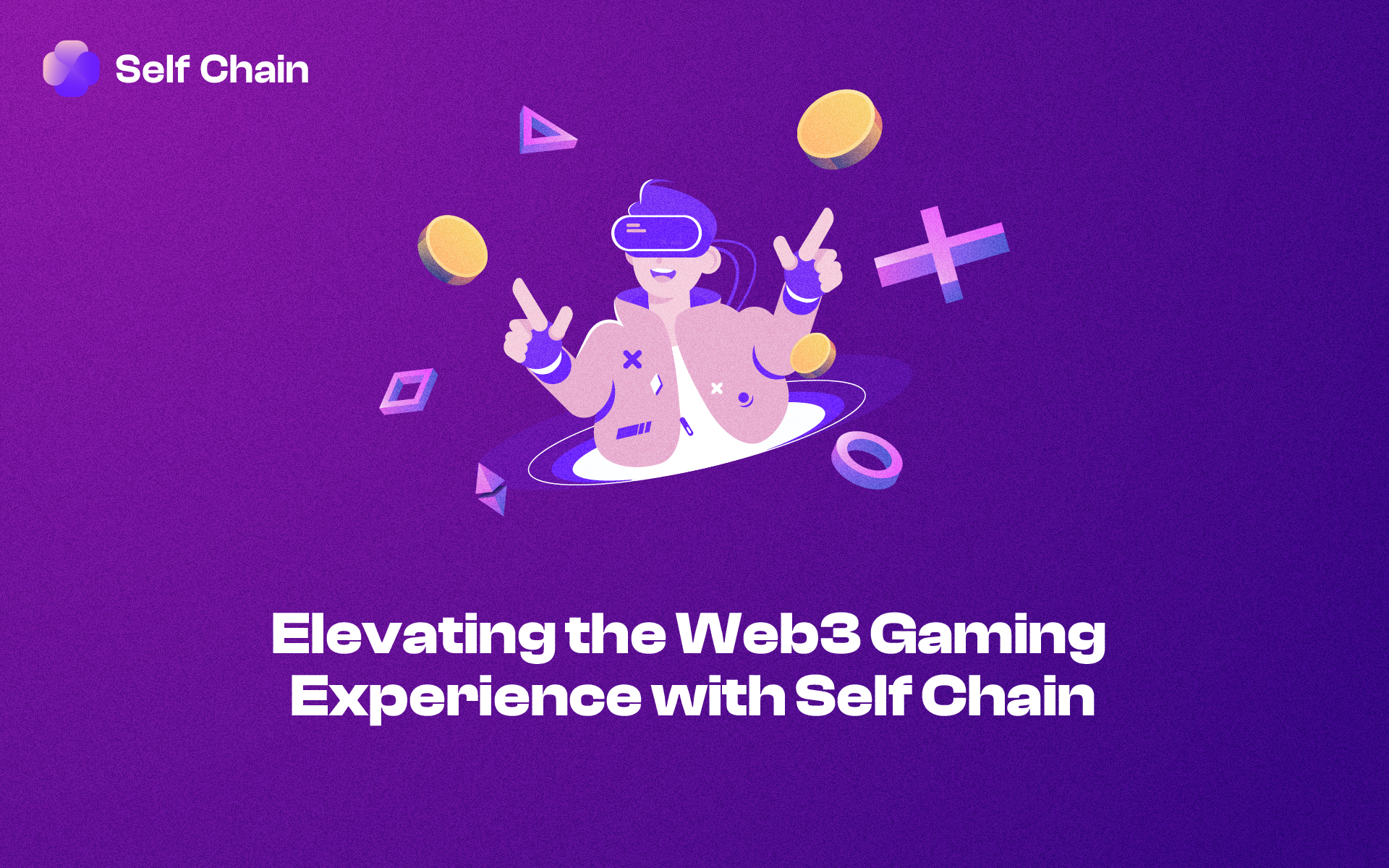Elevating the Web3 Gaming Experience with Self Chain

One of the coolest parts about Web3 Gaming is the assurance that the game items you earn or buy are truly yours. This not only makes gaming more enjoyable but also opens up opportunities to make money from your gaming skills and achievements. However, Web3 gaming is still pretty new, and getting started isn't always straightforward.
Enter Self Chain, a game-changer that's making Web3 gaming safer, easier to use, and more connected. By using some smart tech solutions like Multi-Party Computation (MPC) and Account Abstraction (AA), Self Chain isn't just making small improvements; it's completely transforming the Web3 gaming scene. Let's take a closer look at how Self Chain is upgrading the gaming experience in the Web3 world, using an imaginary game to show off what it's capable of.
Security and Privacy
Core Issue: In traditional Web3 gaming environments, players often face the dilemma of securing their in-game assets and personal information.
Self Chain’s Solution: Leveraging MPC, Self Chain ensures that all transactions and exchanges within games are encrypted, significantly reducing the risk of hacks and unauthorized access. For gamers, this means a secure environment where digital assets, from unique skins to in-game currency, are protected under the highest security standards.
Example: Imagine a game, let’s name it "Galaxy Guilds" for now, where players earn rare artifacts through quests. With Self Chain, when a player trades these artifacts on the marketplace, the transaction is encrypted and split among multiple parties, ensuring no single point of failure and keeping the player’s assets safe.
Customizable Access and Multisig Features
Core Issue: Managing digital assets and in-game progress can be cumbersome, especially when it involves complex security measures.
Self Chain’s Solution: The platform’s AA aspect introduces customizable multisig features, allowing players to set up and manage their in-game assets with flexible permission settings. This means gamers can easily and securely manage their digital assets, set up family accounts, or even create guilds with shared asset control.
Example: In "Galaxy Guilds," a guild leader can set up a multisig wallet for the guild's treasury, requiring consensus from officers for spending funds. This democratizes asset management within the game, enhancing both security and community engagement.
Seamless Interoperability and Cross-Chain Play
Core Issue: Many Web3 games are siloed within specific blockchains, limiting players’ ability to move assets across games and networks.
Self Chain’s Solution: Thanks to its interoperable design, Self Chain connects players across multiple blockchain networks, allowing for true cross-chain gameplay. This not only expands the universe for gamers but also ensures that assets and progress can be ported across different games and ecosystems seamlessly.
Example: A player’s legendary artifact from "Galaxy Guilds" could be used in another game on a different blockchain without hassle, thanks to Self Chain’s interoperable infrastructure.
Enhanced User Experience
Core Issue: The complexity of blockchain technology can deter non-technical gamers from exploring Web3 games.
Self Chain’s Solution: With a user-centric design and keyless wallet infrastructure, Self Chain simplifies the onboarding process. Gamers can easily manage their digital identities and assets without the steep learning curve traditionally associated with blockchain technologies.
Example: New players can join "Galaxy Guilds" with just an email, without worrying about managing private keys or understanding blockchain intricacies. This simplicity is key to attracting a broader audience to Web3 gaming.
Future-Proof Gaming Ecosystems
Self Chain is not just enhancing the current state of Web3 gaming; it's building the foundation for the future. By addressing critical issues of security, usability, and interoperability, Self Chain ensures that the Web3 gaming ecosystems are ready for mainstream adoption.
Example: As "Galaxy Guilds" grows, incorporating new features and expanding into new blockchain territories, Self Chain’s scalable and efficient platform ensures that the game and its community can thrive without being hindered by technical limitations.
In conclusion, Self Chain stands at the forefront of revolutionizing the Web3 gaming experience, making it more secure, accessible, and enjoyable for all. Through its innovative integration of MPC and AA technologies, Self Chain promises a future where gaming is not only fun but also safe, seamless, and inclusive. As we look ahead, it's clear that Self Chain’s impact on Web3 gaming will be profound, setting new standards for how we play and interact in digital worlds.
About Self Chain
Self Chain is the first Modular Intent-Centric Access Layer1 blockchain and keyless wallet infrastructure service using MPC-TSS/AA for multi-chain Web3 access. The innovative system simplifies the user experience with its intent-focused approach, using LLM to interpret user intent and discover the most efficient paths.
Self Chain ensures that onboarding and recovery are effortless with keyless wallets that grant users complete self-custody over their assets. In addition, it provides automated rewards to dApps when they efficiently resolve user intent, further enhancing the user experience. Moreover, Self Chain incorporates Account Abstraction with MPC-TSS to provide secure signing and reduce transaction fees. It's a platform that redefines blockchain interaction, making it more secure and user-friendly for everyone.
In a world where blockchain technology is becoming increasingly essential, the user experience remains a critical factor in its adoption. Intents and Keyless Wallets are set to transform the landscape, making blockchain interactions more accessible, efficient, and secure. As we move forward, the blockchain industry has the opportunity to provide users with a seamless and enjoyable experience, unlocking the full potential of this groundbreaking technology.
